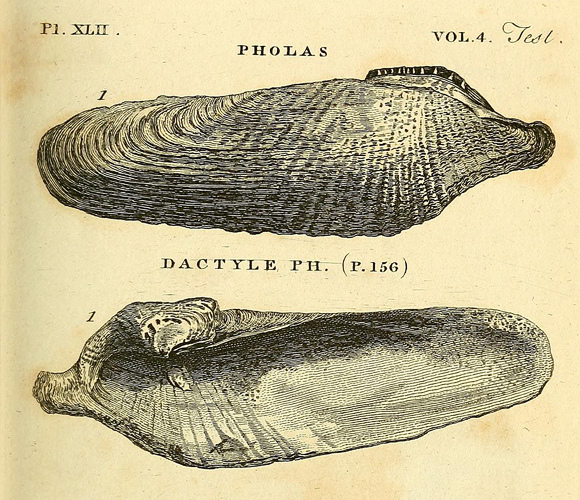
The species in T. Pennant: British Conchology vol. 4 plate XLII, London 1812, via BHL.
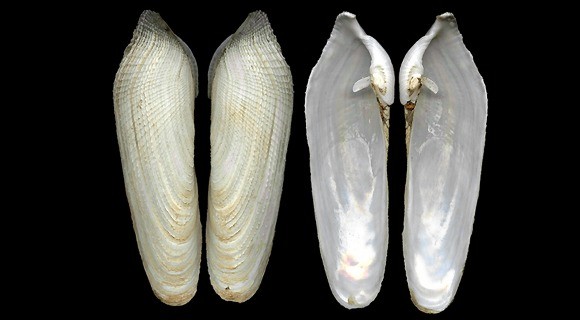
A poorly variable species, despite two named forms: “decurtata” and “gracilis”.
In soft intertidal limestone, Plage de la Concurrence, La Rochelle, Charente-maritime, W. France. 72mm.
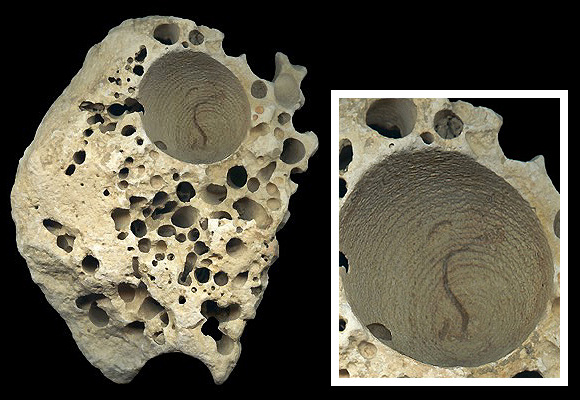
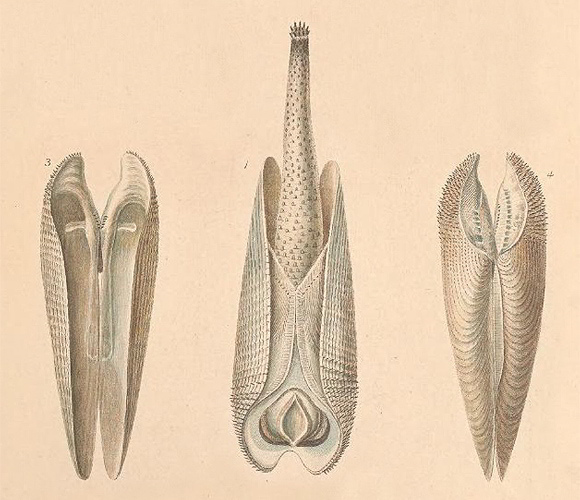
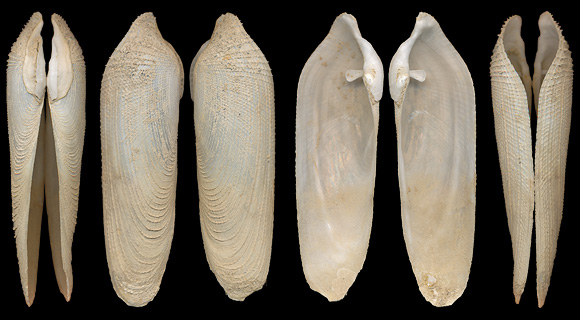
According to Brian Cunningham Aparicio, this may be the only population existing in Murcia. 67mm.
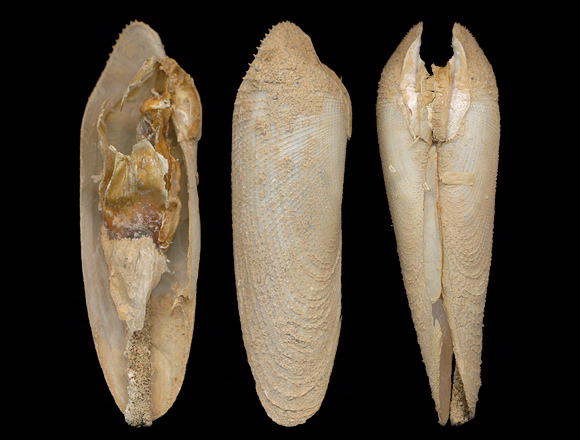
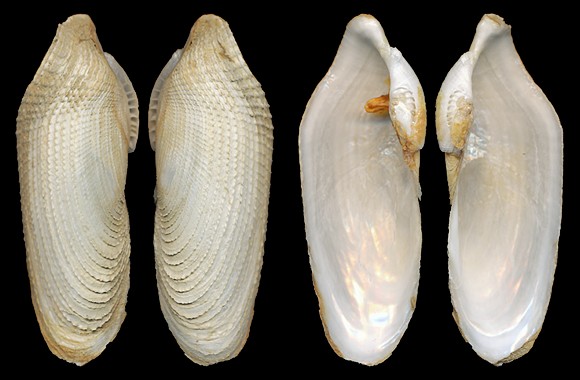
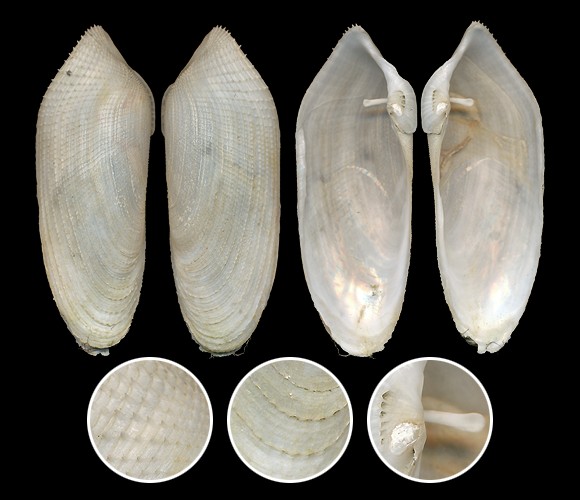
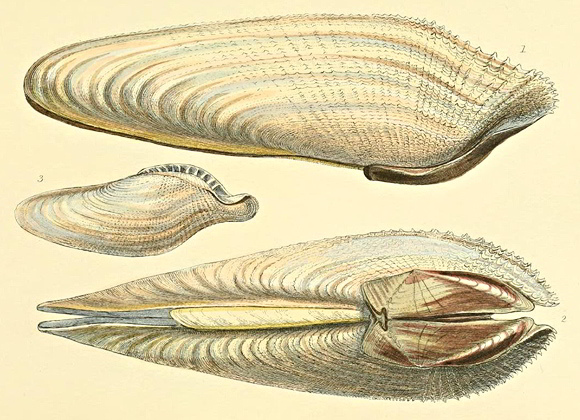
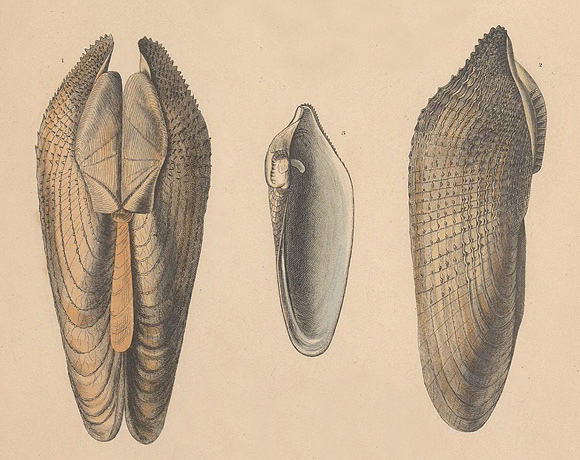
« …on the posterior side of these [valves] is placed a long, spatuliform, plate-like, accessorial valve, affixed by the connecting membrane ; anterior side of the valves with rough, transverse, spinous striae, terminating in a rounded beak, with a large gape at that side ; posterior side smooth, marked with lines of growth, and terminating obtusely ; external surface of an ochre-colour, but varying according to the colour of the substance in which it locates ; inside smooth, white ; below the umbones, a large, flat, curved tooth. »
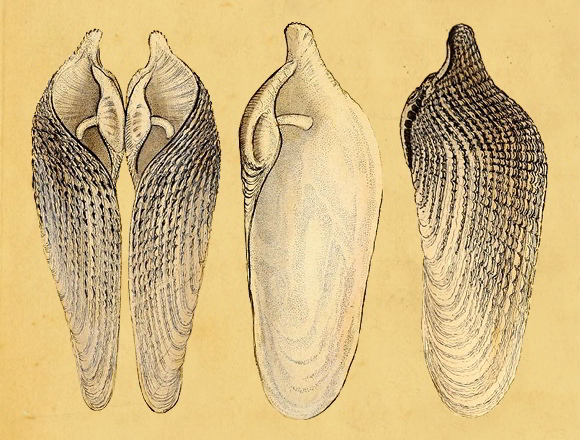
The species in E. Donovan: The natural history of British shells, vol. IV, London 1802,
plate CXVIII. – This wavy form with a big umbonal callosity (with respect to the general length) is at the origin of the epithet “callosa” given by Lamarck (Hist. Nat. An. sans vert. vol. VI p.46) after some drawings in Brookes (fig.7) and in Lister (pl.433). In fact, these shells are just slightly subadult: their valves are not completely developed posteriorly. Nota bene that the epithet callosa has since been attributed to G. Cuvier (Le règne animal vol. II: “Les Pholades”), but it was not possible for me to find out why.
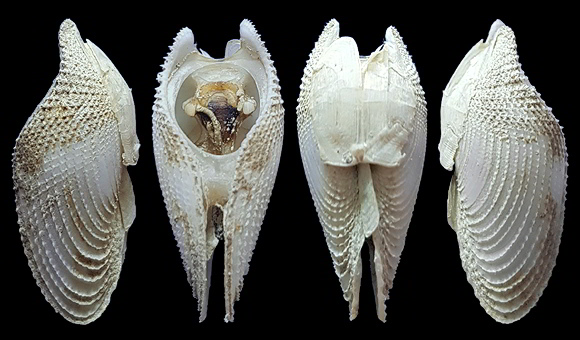
In clay stone at 2m deep, Omis, Croatia. 22mm.
Original pictures provided by B. Cunningham Aparicio (ES).
– (CC BY-NC-SA) –

Original picture provided by S. Clanzig (FR).
– (CC BY-NC-SA) –

Musée des coquilllages (Association SOS Grand Bleu), Saint-Jean-Cap-Ferrat, Alpes-Maritimes, SE. France.